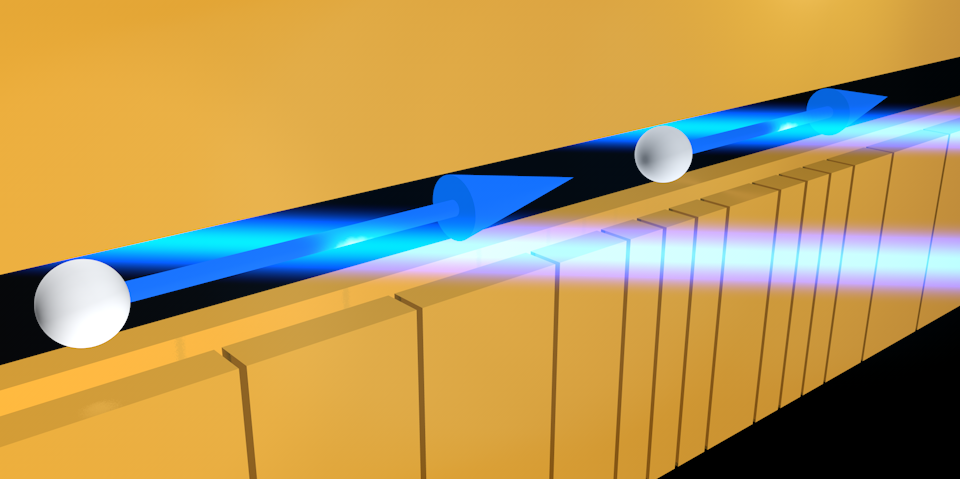A shuttle to quantum computers
- Research
- Institute for Quantum Electronics (IQE)
- D-PHYS
- Quantum sciences
Well-controlled shuttling of ions through laser beams should enable scalable quantum computing.

In experiments with trapped ions, all basic components that are needed for large-scale quantum computing have been demonstrated already. The approach faces major challenges, however, when it comes to scaling it up. In a practical quantum computer, a large number of precise gate operations have to be performed in parallel across an array of traps. Researchers at ETH Zurich might now have found a practical way how this can be done, as they report in two separate publications.
Writing in Physical Review Letters, the group of Jonathan Home at the Institute for Quantum Electronics describes a scalable approach to performing gates in a multi-zone trap array in parallel. More specifically, they found a way around the difficult-to-scale standard methods, which use pulsed optical fields. Instead, they shuttle ions through laser beams. The gates are then controlled by scalable micro-electronics, as is also required for quantum communication within such an array. The new method should therefore serve as a viable approach to simplifying the path to scaling up trapped-ion quantum computing.
For the gate operations to be of high fidelity, the interactions between the light field of the laser and the ion transiting through it have to be known precisely, which is not always the case. This problem was the focus of a separate study, whose results have just been published in Nature Communications. The team has found a general way to estimating the time-dependent Hamiltonian acting on the ion, which is something that has not been possible before. Their novel approach is based on introducing two additional, well-controlled parameters, by abruptly switching off the laser field at specific times and by tuning it to slightly different frequencies. By varying these additional parameters, the physicists mapped out the behaviour of the ions. Moreover, they found an efficient way for comparing the measured maps with calculated ones. As a result, they were able to deduce the unknown parameters governing the shuttling process, and thus to precisely describe the dynamics of the ions as they are sent through the laser beam.
These results will enable the group to further improve the control over the ions, and thus to avoid error and faults in future quantum calculations, which is particularly important for large-scale computations. Also, the new techniques for estimating Hamiltonians can be extended to a broad class of problems and should therefore be applicable to other areas and systems where precise quantum control is essential.
References
de Clercq LE, Lo H-Y, Marinelli M, Nadlinger D, Oswald R, Negnevitsky V, Kienzle D, Keitch B, Home JP: Parallel Transport Quantum Logic Gates with Trapped Ions, Phys. Rev. Lett. 116, 080502 (2016) external pageArticlecall_made external pageSynopsiscall_made
de Clercq LE, Oswald R, Flühmann C, Keitch B, Kienzle D, Lo H-Y, Marinelli M, Nadlinger D, Negnevitsky V, Home JP: Estimation of a general time-dependent Hamiltonian for a single qubit, Nature Comm. 7, 11218 (2016) external pageArticlecall_made
